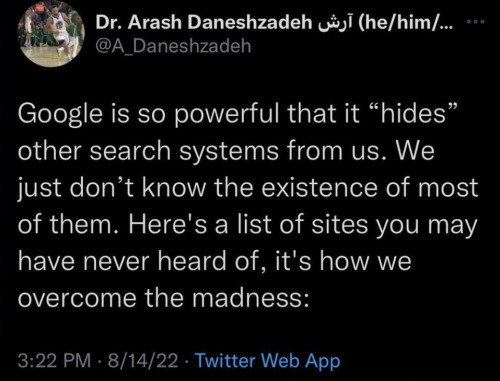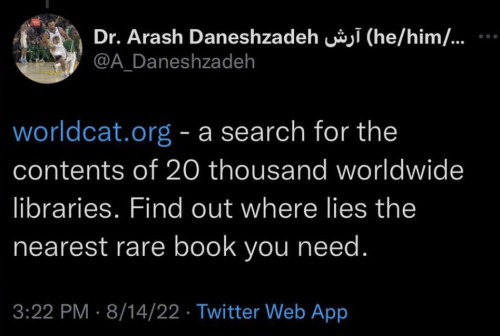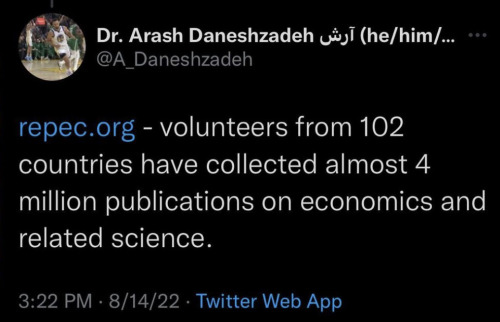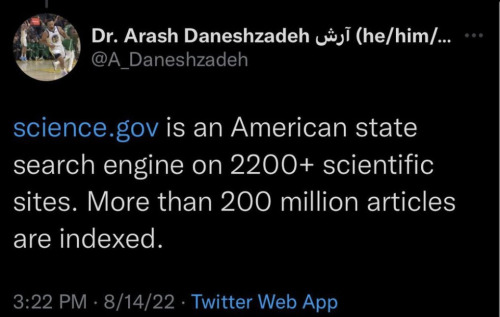Writer Survey Question Time:
writer survey question time:
inspired by seeing screencaps where the software is offering (terrible) style advice because I haven't used a software that has a grammar checker for my stories in like a decade
if you use multiple applications, pick the one you use most often.
More Posts from Cardinalfandom and Others
can we as a society make puppetry cool again. like lets make it trendy. Mainstream. more people should get into doing it and more people should appreciate it. puppetry requires craftsmanship and charisma and physical acting and vocal performance!! you can’t get that from ai. it has a charm to it that neither 2D nor cg animation has. Have you ever watched a puppetry performance and realized you were genuinely convinced that the puppet was getting into bed or eating something or giving a hug that you wholly forgot there was some guy’s arm in there.
isn’t it lovely. to make a funny little guy to tell stories with. is that not so human of us. it’s such a lovely art form. I love you puppets I love you muppets I love you marionettes I love you handmade sock puppets I love you paper bags with googley eyes I love you armatures I love you I love you I love you!!!!!
Oh yes, that period piece about a gay couple with an age-gap living near the water


Film Noir Movies

People think that Film Noir is a reaction to World War II. Not true. Most of the great hard-boiled and noir pulp fiction came out during the 30’s, as a reaction to the great depression. Film noir didn’t become a big thing until after the war (post 1945), because the powers that be didn’t want to release pessimistic, down-ending films that would lower the country’s morale.
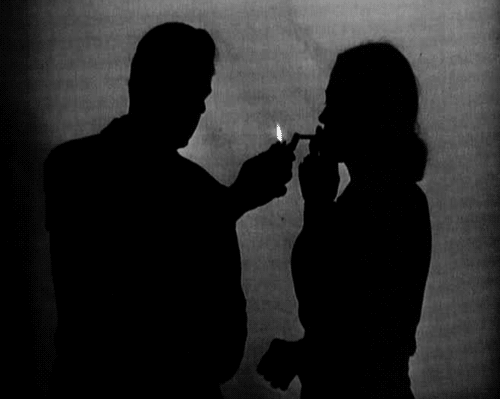
This could be a very loooong list. Hundreds of films in fact. So I am just going to list the films that I heard mentioned specifically in various film noir documentaries and books, as examples of great noir.
Film Noir Era 1945-1958
The Letter (1940)
The Stranger on The Third Floor (1940)
The Maltese Falcon (1941)
The Glass Key (1942)
This Gun For Hire (1942)
Shadow of A Doubt (1943)
Double Indemnity (1944)
To Have and Have Not (1944)
Laura (1944)
Murder My Sweet (1944)
Phantom Lady (1944)
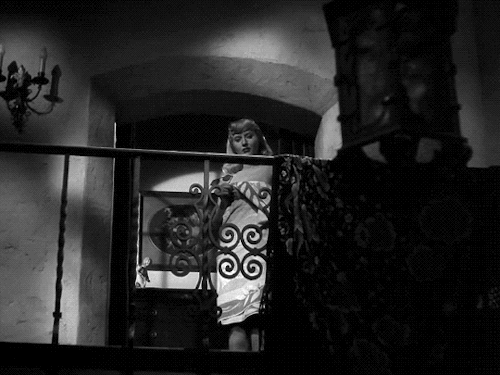
Detour (1945)
Fallen Angel (1945)
Leave Her To Heaven (1945)
The Lost Weekend (1945)
Mildred Pierce (1945)
Scarlet Street (1945)
The Big Sleep (1946)
Black Angel (1946)
The Blue Dahlia (1946)
The Dark Corner (1946)
The Dark Mirror (1946)
Decoy (1946)
Gilda (1946)
The Killers (1946)
Notorious (1946)
The Postman Always Rings Twice (1946)
The Strange Love of Martha Ivers (1946)
The Stranger (1946)

Body and Soul (1947)
Born To Kill (1947)
Brute Force (1947)
Crossfire (1947)
Dark Passage (1947)
Dead Reckoning (1947)
Desperate (1947)
Kiss of Death (1947)
Lady In The Lake (1947)
Nightmare Alley (1947)
Out of The Past (1947)
Ride The Pink Horse (1947)
T-Men (1947)
The Big Clock (1948)
Call Northside 777 (1948)
Cry of The City (1948)

Force of Evil (1948)
He Walked By Night (1948)
Hollow Triumph (1948)
Key Largo (1948)
The Lady From Shanghai (1948)
The Naked City (1948)
Pitfall (1948)
Raw Deal (1948)
The Street With No Name (1948)
They Live By Night (1948)
Act of Violence (1949)
Border Incident (1949)
Criss-Cross (1949)
Impact (1949)
The Reckless Moment (1949)
The Set-Up (1949)
Thieves’ Highway (1949)
The Third Man (1949)
White Heat (1949)
The Asphalt Jungle (1950)
D.O.A. (1950)
The File on Thelma Jordan (1950)
Gun Crazy (1950)
In A Lonely Place (1950)
Night and The City (1950)
Panic In The Streets (1950)
Side Street (1950)
Sunset Boulevard (1950)
Where Danger Lives (1950)
Where The Sidewalk Ends (1950)

Ace In The Hole (1951)
His Kind of Woman (1951)
On Dangerous Ground (1951)
The Prowler (1951)
Strangers On A Train (1951)
The Bad and The Beautiful (1952)
Clash By Night (1952)
Kansas City Confidential (1952)
The Narrow Margin (1952)
Sudden Fear (1952)
Angel Face (1953)
The Big Heat (1953)
The Blue Gardenia (1953)
The Hitch-Hiker (1953)
Niagra (1953)
Pickup on South Street (1953)
Crime Wave (1954)
Human Desire (1954)
Rear Window (1954)
The Big Combo (1955)
The Desperate Hours (1955)
Kiss Me Deadly (1955)
The Night of The Hunter (1955)
The Killing (1956)
While The City Sleeps (1956)
The Wrong Man (1956)
Sweet Smell Of Success (1957)
Touch of Evil (1958)
Vertigo (1958)

Neo-Noir Era 60’s-90’s
À bout de soufflé/ Breathless (1960)
Shoot The Piano Player (1960)
Underworld, U.S.A. (1961)
The Manchurian Candidate (1962)
Harper (1966)
Bonnie and Clyde (1967)
Dirty Harry (1971)
The French Connection (1971)
The Long Goodbye (1973)

Chinatown (1974)
Taxi Driver (1976)
Body Heat (1981)
Blade Runner (1982)
Blood Simple (1984)
To Live and Die In L.A. (1985)
Blue Velvet (1986)
Who Framed Roger Rabbit? (1988)
The Grifters (1990)
King of New York (1990)
Miller’s Crossing (1990)
New Jack City (1991)
The Silence of The Lambs (1991)
Basic Instinct (1992)
Reservoir Dogs (1992)
True Romance (1993)
Natural Born Killers (1994)
Pulp Fiction (1994)
Devil In A New Dress (1995)
Heat (1995)
Se7en (1995)
The Usual Suspects (1995)
Fargo (1996)
L.A. Confidential (1997)
The Big Lebowski (1998)
Payback (1999)
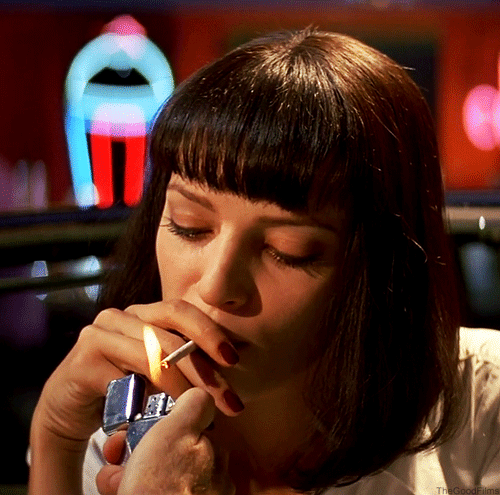
On a scale...
from Saoirse Ronan

to Saoirse Ronan

How successful were you in drowning your sister?
Basic Story Structure
Basic story structure looks like this:

Setup/Exposition - we meet the protagonist in their every day life, possibly meet a few other important characters, and learn important basics about the setting. We also learn about the protagonist’s internal conflict.
Rising Action - The inciting incident turns the character’s life upside down, the character responds by forming a goal. The protagonist pursues this goal while the antagonist/antagonistic force throws obstacles into their path, which they must overcome. Sometimes they succeed, sometimes they fail and have to try again or find a way around it. This struggle builds the conflict and increases the tension as the story races toward the climax.
Climax - this is the “big showdown,” where the protagonist faces the antagonist/antagonistic force head-on, and usually (but not always) succeeds.
Falling Action - this is the aftermath of the big showdown, where the dust settles and all the final pieces come to rest. Most of the story’s loose ends will be tied up here if they weren’t tied up already.
Resolution/Denouement - this is where the story is wrapped up once and for all. We see the protagonist (and other characters) settled back in their old life or getting used to a new normal. If there is a moral to the story, it is revealed here. If the story is leading into a second book, a little bit of set-up for the new story will occur here.
•••••••••••••••••••••••••••••••••
Have a writing question? My inbox is always open!
Visit my FAQ
See my Master List of Top Posts
Go to ko-fi.com/wqa to buy me coffee or see my commissions!
I've only read the 13 main series books. I what order do you recommend I read the other books? (Mainly, Autobiography and Beatrice Letters before or after ATWQ and 13 Suspicious?)
An interesting question. Here’s the chronological order:
“29 Myths on the Swinster Pharmacy”,
“Who Could That Be At This Hour?” & “When Did You See Her Last?”,
“File Under: 13 Suspicious Incidents”,
“Shouldn’t You Be In School?”, & “Why Is This Night Different From All Other Nights?”
“The Dismal Dinner”,
“The Bad Beginning” and the notes from “The Bad Beginning: Rare Edition”,
From “The Reptile Room” to “The Hostile Hospital”,
“The un-Authorized Autobiography” and “Calendar of Unfortunate Events”,
From “The Carnivorous Carnival” to “The End”,
“The Beatrice Letters”.
And here’s my prefered, recommended order:
From “The Bad Beginning” to “The Grim Grotto”,
“The un-Authorized Autobiography”, “The Dismal Dinner”, “Calendar of Unfortunate Events” and the notes from “The Bad Beginning: Rare Edition”,
“The Penultimate Peril”,
“The Beatrice Letters”,
“The End”,
“29 Myths on the Swinster Pharmacy”,
“Who Could That Be At This Hour?” & “When Did You See Her Last?”,
“File Under: 13 Suspicious Incidents”,
“Shouldn’t You Be In School?”, & “Why Is This Night Different From All Other Nights?”
A lot of the supplementary material can’t really be enjoyed if you don’t have a basic knowledge of what happens during most of “A Series of Unfortunate Events”. This also applies to “All The Wrong Questions”, which is admittedly difficult to understand if you don’t have any idea of what VFD actually involves.
I adore twin peaks because people talk about how opaque it is but like windom earle asked major briggs his greatest fear and the answer was "the possibility that love is not enough" and that's it that's the show. Love wasn't enough.
Not only that love wasn't enough, but that it was what fed the darkness in the woods.
Love is not enough, you have to break the cycle. Fix your hearts or die.
Twin Peaks is a show that tells you exactly what it's about like every three episodes but people don't see it because there's a horse in the living room.
Updated Reading List 6.1: Ancient Jewish History
Historiography, Theory, Methodology, Construction, and Philosophy of History American History Ancient History Atlantic World History European History
Jewish History: Ancient-Late Antique*
A History of Ancient Israel and Judah, Second Edition by J. Maxwell Miller and John Haralson Hayes
A Brief History of Ancient Israel by Victor H. Matthews
The History of the Jews in the Greco-Roman World: The Jews of Palestine from Alexander the Great to the Arab Conquest by Peter Schlafer
The Ancient Jews from Alexander to Muhammad (Key Themes in Ancient History) by Seth Schwartz
Surviving Sacrilege: Cultural Persistence in Jewish Antiquity by Steven Weitzman
*A lot of my preferred books in the realm of “Ancient Jewish History” fall under the heading of “Biblical Studies,” which will be in a separate, “History Adjacent” reading list. Some of these are also featured/repeated in the Israeli/Palestinian Conflict Reading List, which I am presently editing. NOTE: I’m an Amazon Affiliate; I will receive a small portion of the proceeds from ANYTHING [hint] you purchase on Amazon via my links. I am an independent scholar, and need $$$ to pay my translators etc for my book on Jewish women’s Holocaust resistance, so anything you can do helps! If you’d rather not give your $$$ to Amazon but still want to help this independent scholar out, my paypal is here.
New clip of Carmelita Spats with the Baudelaires & Quagmires from The Austere Academy
-
 marshmallow-fluffy reblogged this · 2 weeks ago
marshmallow-fluffy reblogged this · 2 weeks ago -
 acanvasofabillionsuns reblogged this · 2 weeks ago
acanvasofabillionsuns reblogged this · 2 weeks ago -
 florendering liked this · 2 weeks ago
florendering liked this · 2 weeks ago -
 troutminge liked this · 2 weeks ago
troutminge liked this · 2 weeks ago -
 funkylittlebats reblogged this · 2 weeks ago
funkylittlebats reblogged this · 2 weeks ago -
 mostlikelytokillyouwithaspoon reblogged this · 2 weeks ago
mostlikelytokillyouwithaspoon reblogged this · 2 weeks ago -
 mostcertainlynotcis reblogged this · 3 weeks ago
mostcertainlynotcis reblogged this · 3 weeks ago -
 shi-away reblogged this · 3 weeks ago
shi-away reblogged this · 3 weeks ago -
 cottoncandibal liked this · 3 weeks ago
cottoncandibal liked this · 3 weeks ago -
 htmelle reblogged this · 3 weeks ago
htmelle reblogged this · 3 weeks ago -
 dontforgettheunderscore liked this · 3 weeks ago
dontforgettheunderscore liked this · 3 weeks ago -
 doctordickpenis reblogged this · 4 weeks ago
doctordickpenis reblogged this · 4 weeks ago -
 isenstar777 reblogged this · 4 weeks ago
isenstar777 reblogged this · 4 weeks ago -
 lemon-astriks-dash-astriks reblogged this · 4 weeks ago
lemon-astriks-dash-astriks reblogged this · 4 weeks ago -
 lemon-astriks-dash-astriks liked this · 4 weeks ago
lemon-astriks-dash-astriks liked this · 4 weeks ago -
 rossstheboss liked this · 4 weeks ago
rossstheboss liked this · 4 weeks ago -
 junebugfall reblogged this · 4 weeks ago
junebugfall reblogged this · 4 weeks ago -
 winteriine reblogged this · 4 weeks ago
winteriine reblogged this · 4 weeks ago -
 jesterbells liked this · 1 month ago
jesterbells liked this · 1 month ago -
 shambolicrube reblogged this · 1 month ago
shambolicrube reblogged this · 1 month ago -
 sassygaykuja reblogged this · 1 month ago
sassygaykuja reblogged this · 1 month ago -
 tizztoon reblogged this · 1 month ago
tizztoon reblogged this · 1 month ago -
 zeyalderson reblogged this · 1 month ago
zeyalderson reblogged this · 1 month ago -
 zeyalderson liked this · 1 month ago
zeyalderson liked this · 1 month ago -
 makowashimai reblogged this · 1 month ago
makowashimai reblogged this · 1 month ago -
 athousandwords reblogged this · 1 month ago
athousandwords reblogged this · 1 month ago -
 hellanahmean reblogged this · 1 month ago
hellanahmean reblogged this · 1 month ago -
 fromthestacks liked this · 1 month ago
fromthestacks liked this · 1 month ago -
 honey-bunchesofgoats reblogged this · 1 month ago
honey-bunchesofgoats reblogged this · 1 month ago -
 honey-bunchesofgoats reblogged this · 1 month ago
honey-bunchesofgoats reblogged this · 1 month ago -
 honey-bunchesofgoats liked this · 1 month ago
honey-bunchesofgoats liked this · 1 month ago -
 lalunabloom reblogged this · 1 month ago
lalunabloom reblogged this · 1 month ago -
 buurenaar reblogged this · 1 month ago
buurenaar reblogged this · 1 month ago -
 buurenaar liked this · 1 month ago
buurenaar liked this · 1 month ago -
 neighborhoodbanshee reblogged this · 1 month ago
neighborhoodbanshee reblogged this · 1 month ago -
 ffwrnais-awen liked this · 1 month ago
ffwrnais-awen liked this · 1 month ago -
 myorqeii reblogged this · 1 month ago
myorqeii reblogged this · 1 month ago -
 quiteboared reblogged this · 1 month ago
quiteboared reblogged this · 1 month ago -
 archenarrow liked this · 1 month ago
archenarrow liked this · 1 month ago -
 hazeleyesallmine reblogged this · 1 month ago
hazeleyesallmine reblogged this · 1 month ago -
 the-sub-orbital-warlock reblogged this · 1 month ago
the-sub-orbital-warlock reblogged this · 1 month ago -
 look-here-luego reblogged this · 1 month ago
look-here-luego reblogged this · 1 month ago -
 alanamiss liked this · 1 month ago
alanamiss liked this · 1 month ago -
 seulwt liked this · 1 month ago
seulwt liked this · 1 month ago -
 thecheshirerat reblogged this · 1 month ago
thecheshirerat reblogged this · 1 month ago -
 chaotic-butch liked this · 1 month ago
chaotic-butch liked this · 1 month ago -
 shadathebookworm liked this · 1 month ago
shadathebookworm liked this · 1 month ago -
 ladydaenys liked this · 1 month ago
ladydaenys liked this · 1 month ago
